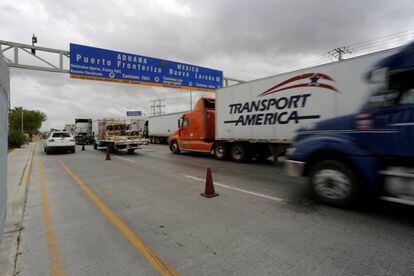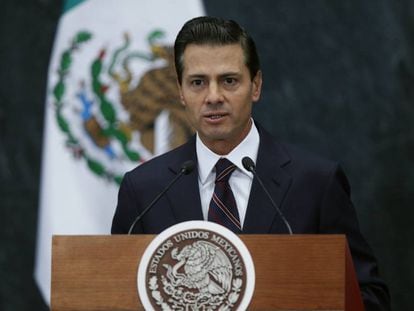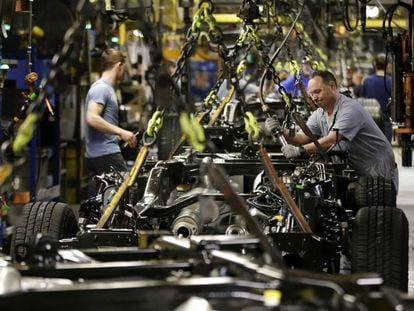Mexicans working in the United States earn six times more than at home
Salary gap between the two countries explains immigration and why US companies head south

Mexicans cross the border into the United States in search of better wages, while US companies head south to save on labor costs. The average monthly salary for a Mexican worker employed in the United States at the end of 2016 was $1,870. In comparison, the average wage in Mexico was six times lower, at $291 a month.

The $22,235 the average Mexican earns a year in the US falls short of the minimum annual salary in more progressive states such as California or New York, where the level is around $23,000. Furthermore, the base of the pyramid of salaried Mexicans is very broad: some 40% earn between $10,000 and $19,000, according to official figures.
It is also necessary to take into account the cost of living in the two countries. It costs twice as much to fill the average shopping basket in the United States as in Mexico, according to the Organization for Economic Cooperation and Development (OECD). After taking into account the gross salary gap, the difference in income would still be around three times bigger north of the border.
Mexico is among the world’s 30 countries with the highest levels of inequality
“Part of the gap has to do with education and training levels. This is why the profile of immigration has been changing. Many workers with masters and doctorates stay in the United States,” says Gerardo Esquivel from the Colegio de Mexico. “But these differences respond to very different labor and productivity structures. And most importantly, this gap has hardly shrunk since the entry of the free trade deal [1994]. These figures show that Mexico has not been the winner in NAFTA. Despite an increase in foreign trade and investment, the salary difference has not been reduced,” he adds. More than two decades of NAFTA have seen US direct investment in Mexico increase sixfold.
But Donald Trump has forced Mexico to renegotiate NAFTA, saying he intends to protect jobs and rebuild the country’s industrial capacity. The effect of this could impact on the production chain connecting Mexico and the United States, which is fed on one side by technology and added value, and on the other by logistics and low salaries.
It costs twice as much to fill the average shopping basket in the United States as in Mexico
Mexico’s competitiveness is largely based on these two factors. The automotive industry, for example, generates around a million jobs in the country. The majority are employed on production lines, while the positions requiring better training, such as design, engineering and research are almost always located in Europe, Japan and the United States.
Over the last decade, salaries in Mexican car plants have risen by barely 10%. In China, they have risen by more than 15%, according to a report by the CIDAC think tank.
Mexico is among the world’s 30 countries with the highest levels of inequality, according to the UN’s Development Program, ahead of countries such as Nigeria and Congo. The income of the wealthiest 10% is 21 times higher than the poorest 10%, according to official figures. The minimum salary does not cover basic needs and is below the poverty line, where almost half the population finds itself. Over the last two years, some two million people have joined the ranks of the poor.
English version by Nick Lyne.












































